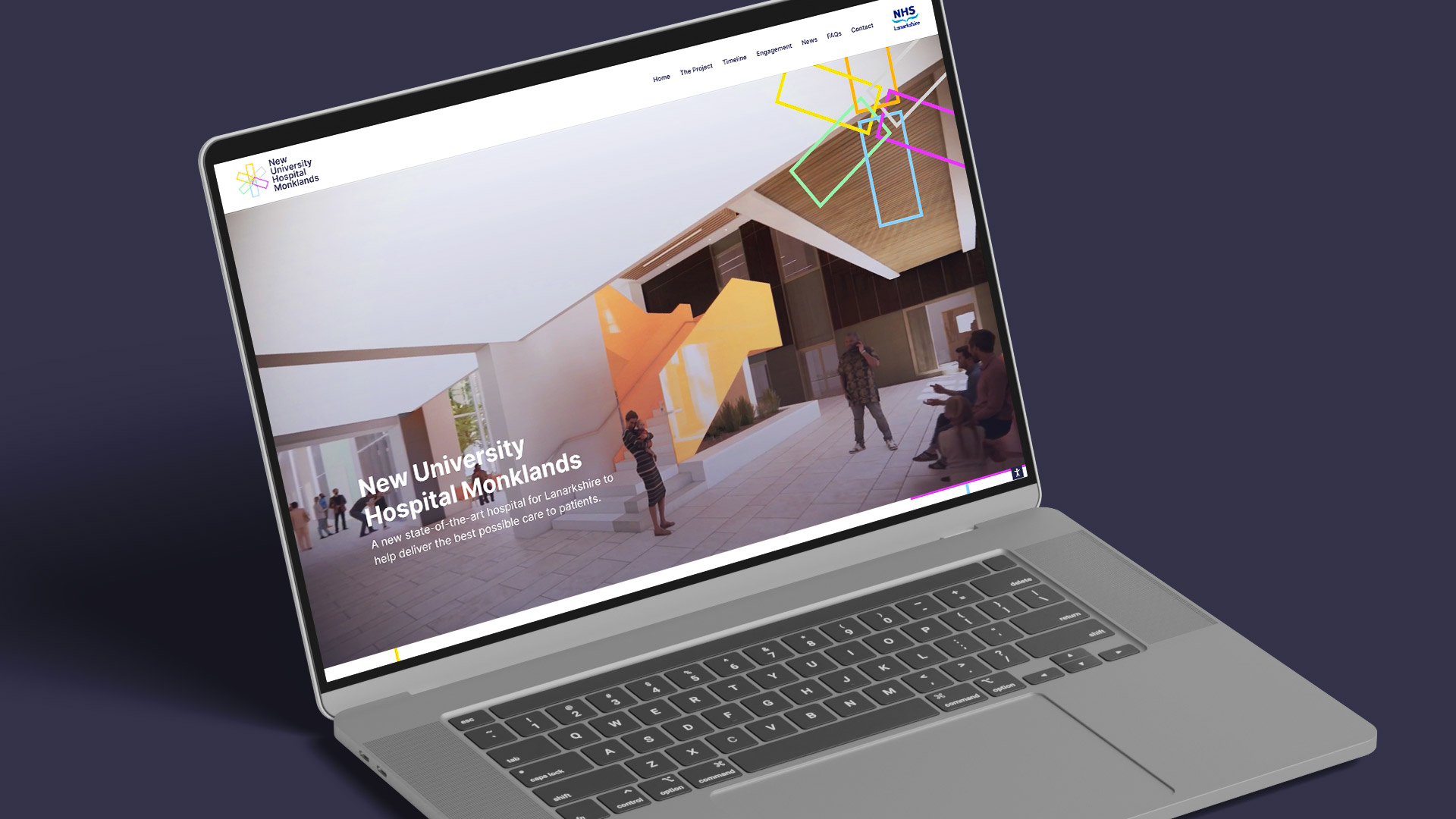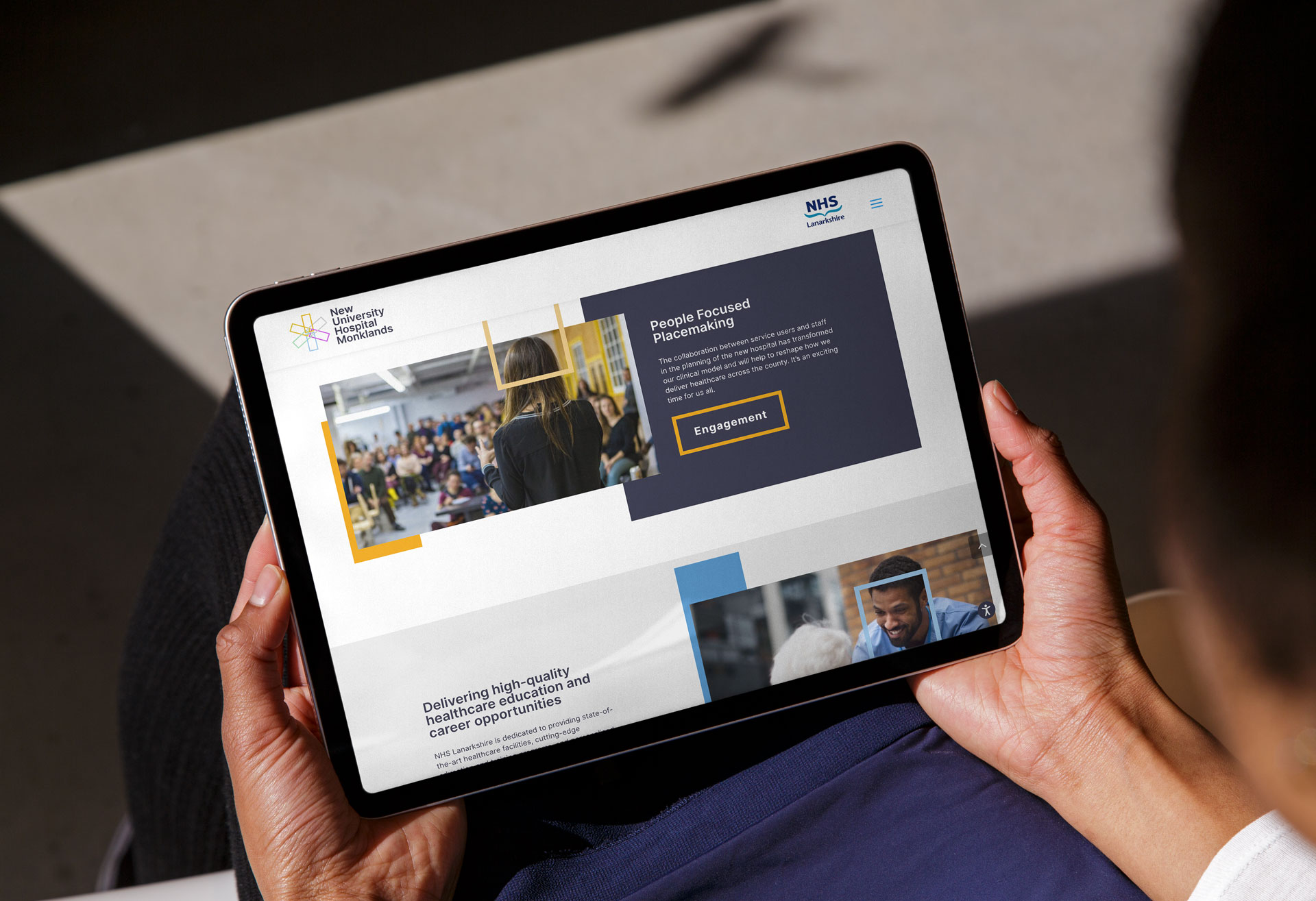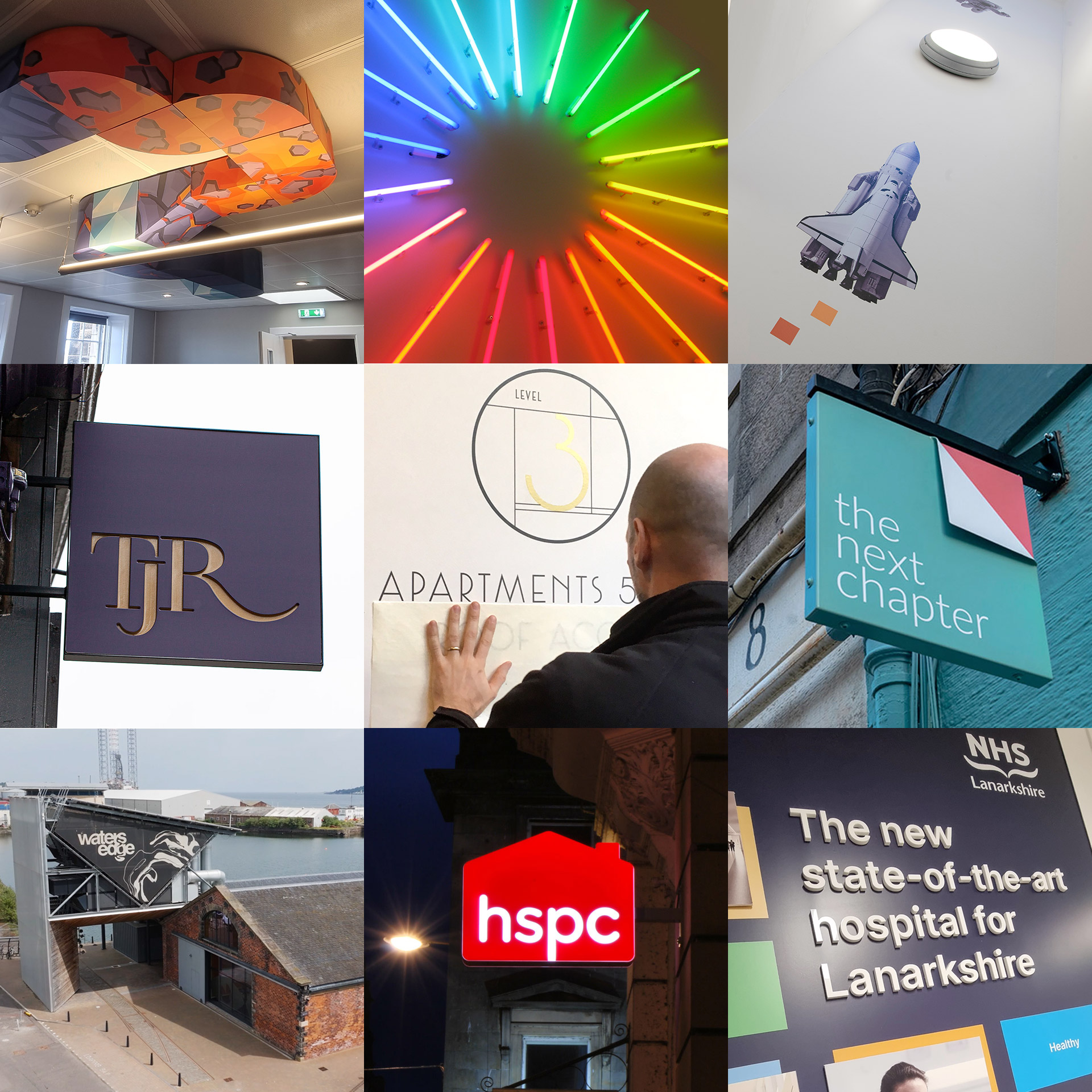In today’s digital-first world, a website is more than just an online address—it’s the cornerstone of your brand’s identity.
For healthcare brands, where trust, accessibility, and reliability are paramount, having a well-designed website is even more critical. Your site needs to engage visitors, build credibility, and provide easy access to essential information.
Using our work on Monklands.org as an example of our approach here’s a step-by-step guide to designing a website that sets your healthcare brand apart.

Understand Your Audience
Before diving into the design, take time to understand your audience and identify possible different types of visitors such as patients, caregivers, medical professionals and other potential interested parties.
At Monklands.org, our design approach centred on understanding the needs of their diverse audience, from local patients seeking general healthcare information to professionals looking for updates on services and facilities.
Key Takeaways:
- Define User Needs: Identify what visitors are looking for—appointment booking, service information, patient education, or contact details.
- Consider Accessibility: Ensure the site caters to all users, including those with disabilities. Features like screen reader compatibility, used in Monklands.org, make a significant difference in user experience.
Prioritise Clean and Intuitive Design
Healthcare websites need to be clear, easy to navigate, and free from clutter. Visitors often come to your site for specific reasons, such as finding a doctor or learning about treatments. A clean design ensures they can find what they need quickly.
Key Design Tips:
- Minimalist Layout: Like at Monklands.org, we employed a clean layout with plenty of white space, helping users quickly locate key information.
- Simple Navigation: Include a straightforward menu with clear labels such as “Services,” “Contact Us,” “About Us,” and “Book Appointment.”
- Mobile-Friendly Design: Employ mobile optimisation to ensure your site is responsive and works seamlessly across all devices.
Highlight Your Brand’s Identity
Your website should reflect your healthcare brand’s mission, values, and personality. Consistent branding builds trust and recognition.
For Monklands.org, we ensured the brand’s mission of delivering accessible and patient-focused care was woven into every element of the website.
- Use Your Logo and Colours: Incorporate your brand’s logo and colour palette to reinforce identity. Monklands’ website uses a calming palette, aligned with healthcare aesthetics.
- Feature Your Mission: The homepage prominently highlights Monklands’ commitment to improving healthcare access in the local community.

Showcase Key Information Upfront
Healthcare websites are often used to access critical information, so make sure it’s easy to find.
Must-Have Features:
- Contact Information: At Monklands.org, phone numbers, email addresses, and directions are prominently displayed at the top of the homepage for convenience.
- Appointment Booking: Integrating a user-friendly booking tool was a priority for Monklands, allowing patients to schedule appointments with ease.
- Services Offered: Clearly listing treatments and services, as done on Monklands’ website, ensures visitors know exactly what the brand provides.
Incorporate Trust Signals
Trust is everything in healthcare. Your website should reassure visitors that your brand is credible and dependable. For Monklands.org, we used trust-building strategies such as:
- Showcasing Reviews and Testimonials: Positive feedback from patients was prominently displayed to reflect the quality of care.
- Highlighting Accreditations: Certifications and partnerships were featured to demonstrate credibility.
Leverage Educational Content
Healthcare brands can boost engagement and authority by providing valuable, informative content. For Monklands.org, we implemented a resource hub for visitors, offering tips on common health issues and access to helpful guides.
Content Ideas:
- Blog posts about common conditions, treatments, or preventive care tips.
- FAQs addressing patient concerns, a standout feature on Monklands’ website.
Educational content positions your brand as a trusted authority and encourages visitors to return to your site.
Optimise for Speed and Performance
Slow-loading websites frustrate users and can harm search engine rankings. At Monklands.org, we ensured the website loaded quickly and performed smoothly across devices, resulting in a better user experience.
Speed Optimisation Tips:
- Compress images without sacrificing quality.
- Minimise the use of heavy scripts or plugins.
- Use a reliable hosting provider to ensure fast load times.
Make Accessibility a Priority
Healthcare brands have a responsibility to ensure their websites are accessible to everyone.
At Monklands.org, we implemented several accessibility features, such as high-contrast colour schemes, alt text for images, and keyboard navigation, making the website inclusive for all users.
Add Analytics and Feedback Tools
To continually improve your website, it’s important to understand how visitors interact with it.
For Monklands.org, we integrated tools like Google Analytics to track user behaviour and feedback forms to gather insights directly from patients. This data helped refine the user experience over time.
Keep It Updated
Finally, your website isn’t a “set it and forget it” project. Regular updates ensure it remains relevant, accurate, and engaging. For Monklands.org, we provided ongoing support to ensure the site stays up-to-date with the latest healthcare information and services.
Conclusion
Designing a website for your healthcare brand requires a balance of functionality, aesthetics, and trust-building. By focusing on clean design, easy navigation, strong branding, and accessibility—exemplified in our work on Monklands.org—you can create a site that not only looks great but also serves your audience effectively.
Your website is often the first impression potential patients have of your brand. Make it count by designing an experience that reflects the care, professionalism, and expertise your healthcare brand offers.

